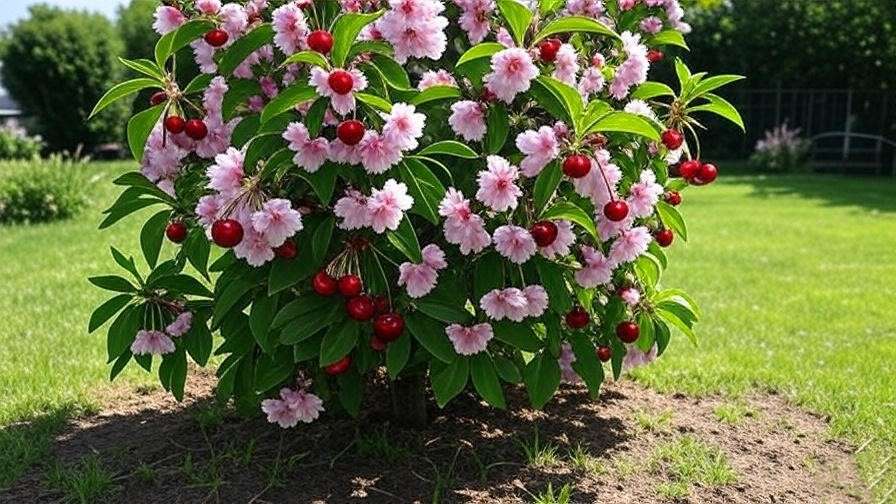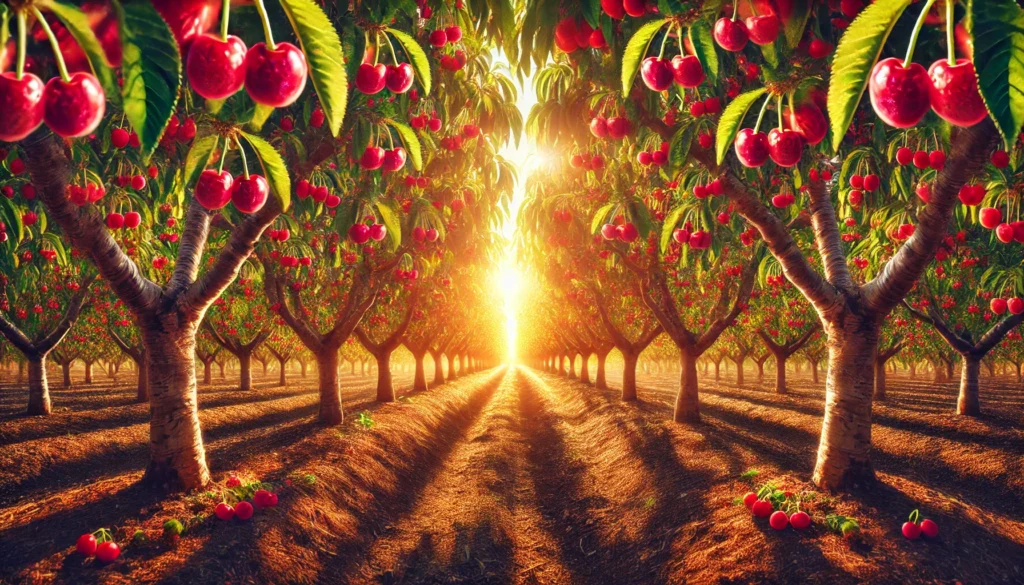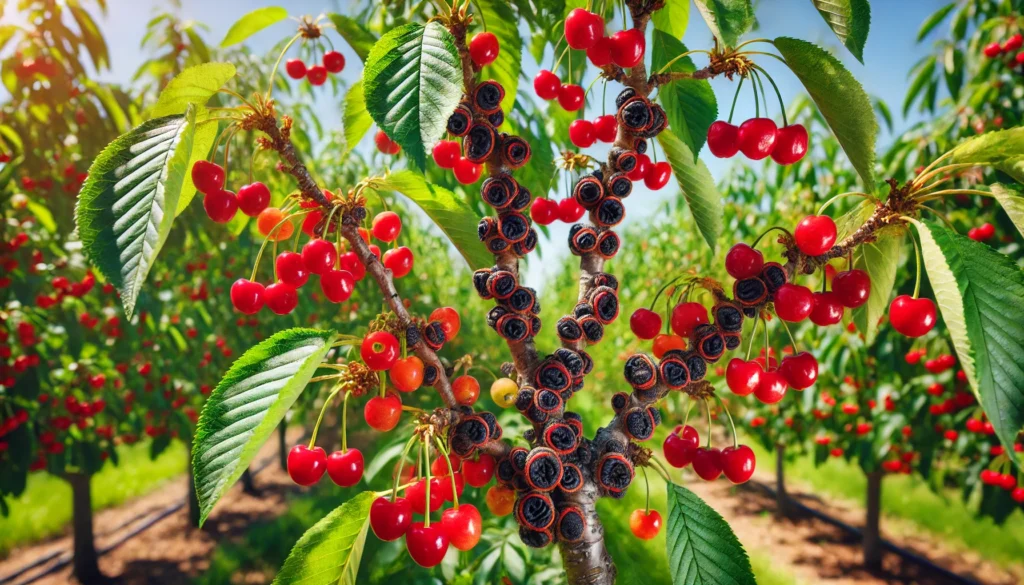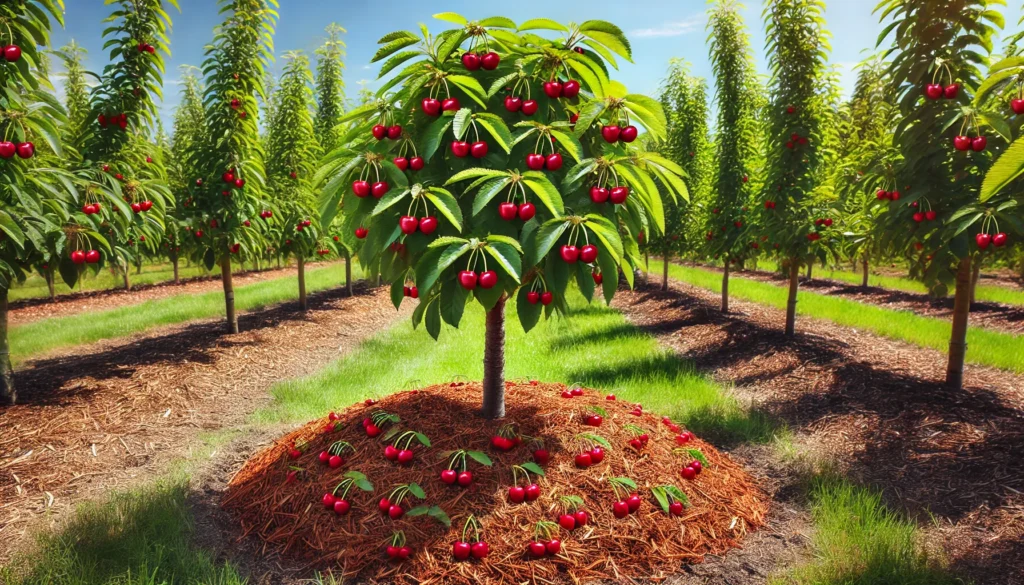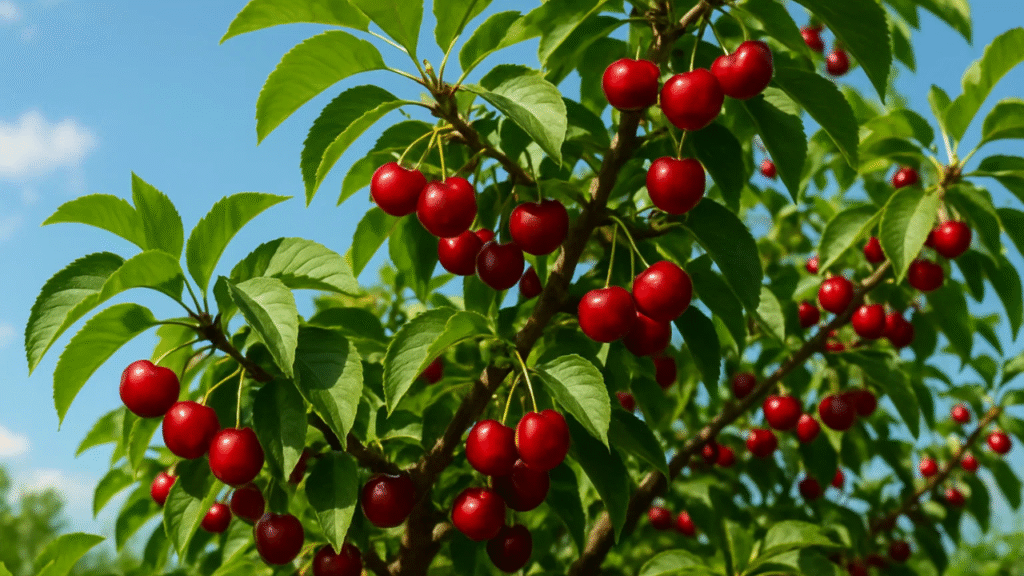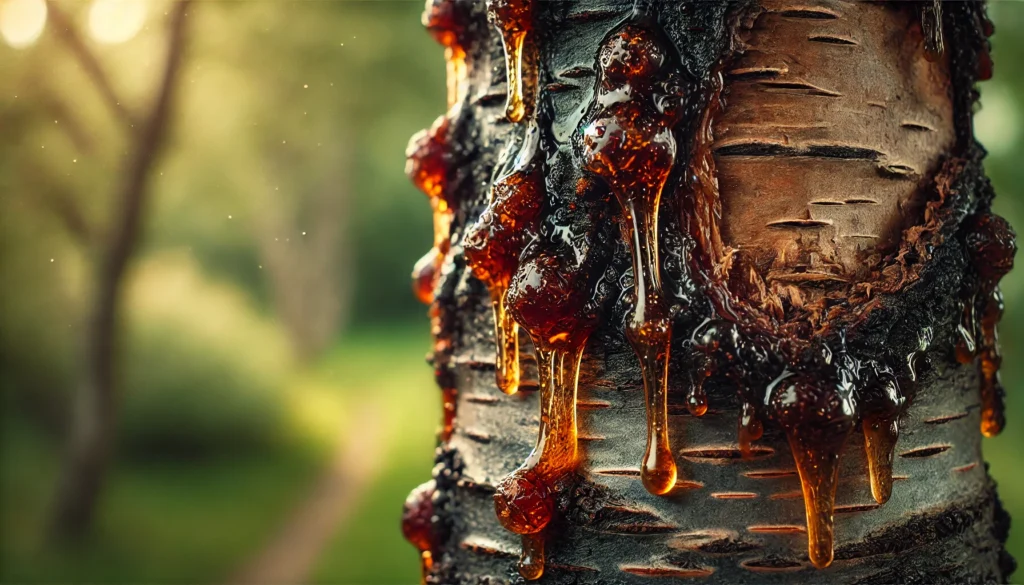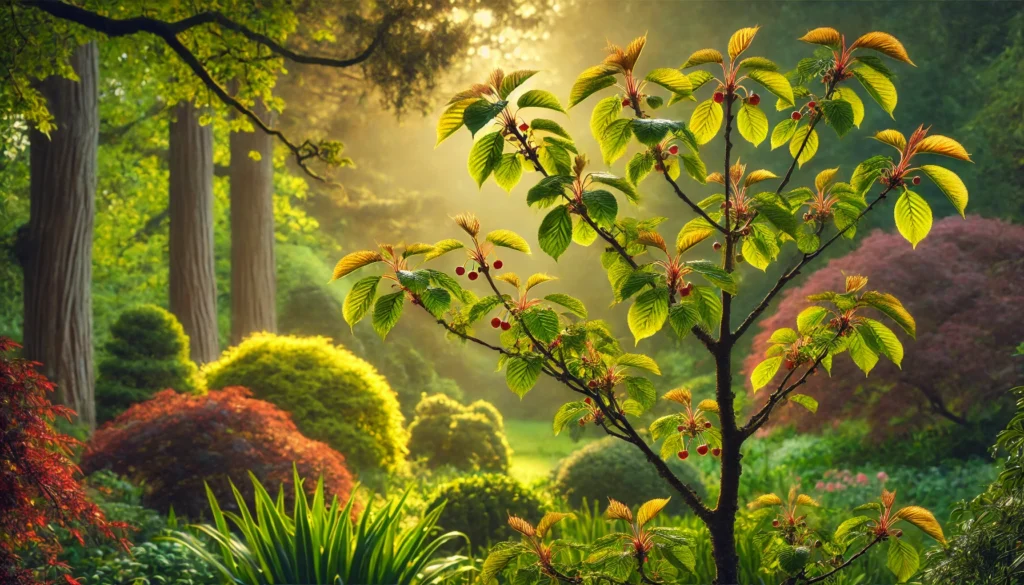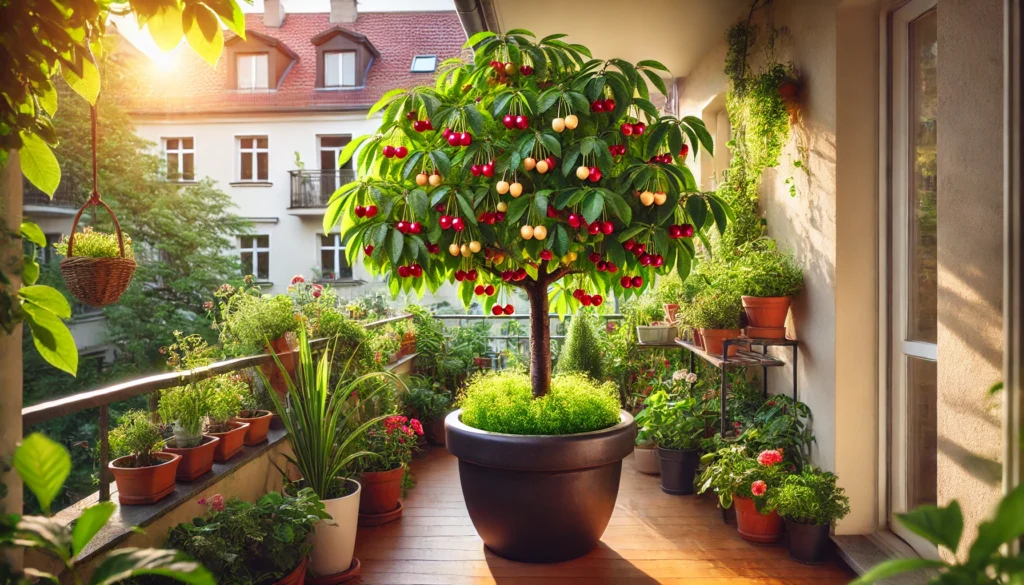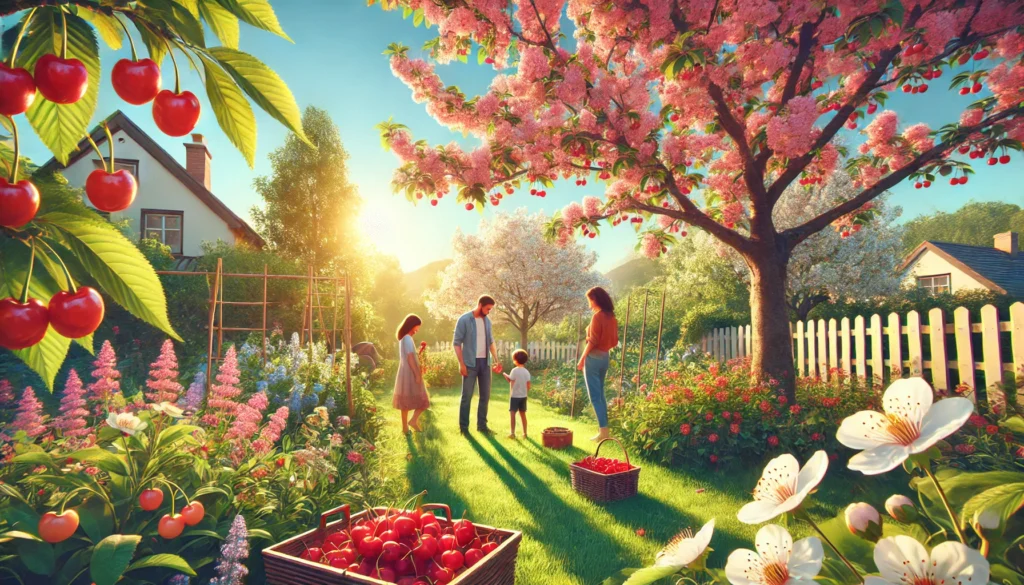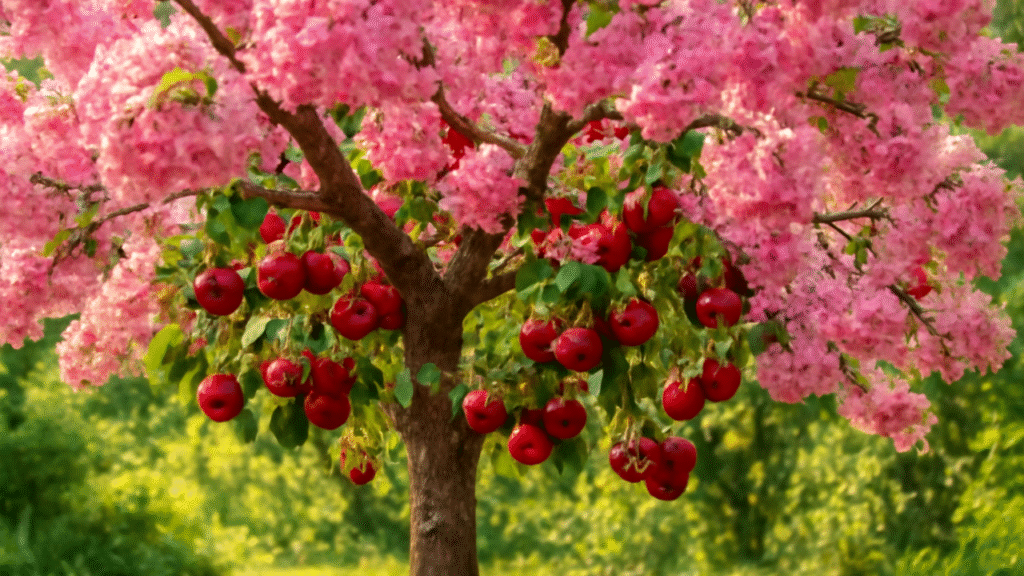Imagine stepping into your garden to be greeted by a burst of delicate pinkish-white blossoms in spring, followed by a bounty of tart, ruby-red cherries in summer. The Nanking cherry plant (Prunus tomentosa) makes this dream a reality for gardeners of all skill levels. This versatile, low-maintenance shrub is a must-have for anyone looking to add beauty, edible fruit, and wildlife appeal to their landscape. Whether you’re a beginner or a seasoned gardener, this comprehensive guide will equip you with expert tips to grow a thriving Nanking cherry plant. Backed by horticultural expertise and practical experience, we’ll cover everything from planting to harvesting, ensuring your shrub flourishes with vibrant blooms and abundant fruit. 🌿 Let’s dive into the world of Nanking cherries and transform your garden into a showstopper!
Understanding the Nanking Cherry Plant 🌱
What Is a Nanking Cherry Plant?
The Nanking cherry plant, scientifically known as Prunus tomentosa, is a deciduous shrub native to Asia, celebrated for its stunning spring blossoms and tart, edible cherries. Growing to a manageable height of 6–10 feet, this fast-growing plant is ideal for small gardens, urban spaces, or large landscapes. Its cold hardiness (USDA zones 2–7) makes it a resilient choice for diverse climates, from chilly northern regions to milder areas. The shrub’s fuzzy leaves, vibrant pinkish-white flowers, and bright red fruit add year-round visual interest, making it a favorite among gardeners seeking both beauty and functionality.
Why Choose a Nanking Cherry Plant for Your Garden?
Nanking cherries are a triple threat: they’re ornamental, practical, and eco-friendly. In spring, their delicate blossoms create a breathtaking display, rivaling the beauty of ornamental cherries. By summer, they produce tart, juicy cherries perfect for jams, jellies, or fresh eating. In fall, their foliage turns warm shades of orange and red, adding seasonal charm. Beyond aesthetics, Nanking cherries attract pollinators like bees and birds, supporting local ecosystems. They also serve as excellent hedges or windbreaks, offering privacy and protection. For gardeners seeking a low-maintenance plant with high rewards, the Nanking cherry is a top choice. 🐝
Planting Your Nanking Cherry Plant 🌍
Choosing the Right Location
To ensure your Nanking cherry plant thrives, location is key. These shrubs demand full sun, requiring at least 6 hours of direct sunlight daily to produce abundant blooms and fruit. Choose a spot with well-drained, loamy soil and a pH between 5.0 and 7.5 for optimal growth. Avoid low-lying areas prone to waterlogging, as excess moisture can harm the roots. Space plants 6–8 feet apart to allow for air circulation and room to spread, especially if you’re creating a hedge or planting multiple shrubs for cross-pollination.
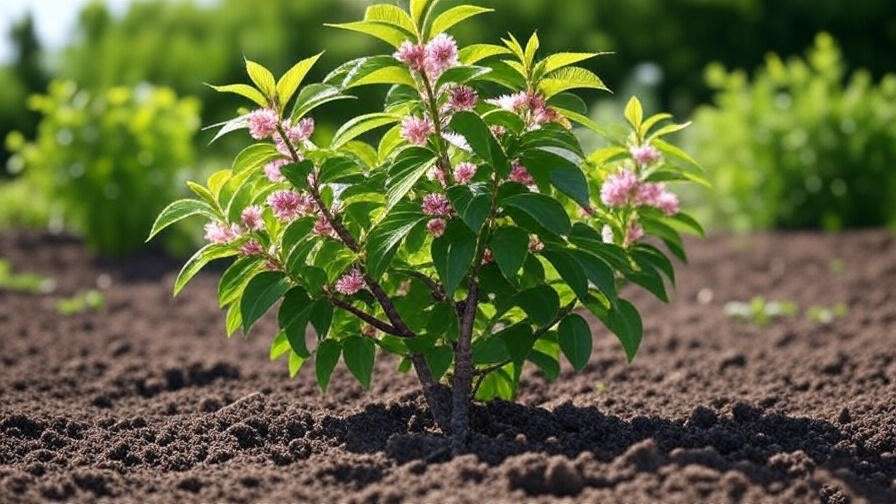
When and How to Plant
The best time to plant a Nanking cherry is in early spring or fall, when cooler temperatures promote root establishment. Follow these steps for successful planting:
- Dig the Hole: Create a hole twice as wide and as deep as the root ball to give roots room to spread.
- Amend the Soil: Mix compost or organic matter into the soil to boost nutrients and improve drainage.
- Position the Plant: Place the shrub at the same depth it was in its nursery pot, ensuring the root collar is level with the soil surface.
- Backfill and Water: Fill the hole with soil, tamp gently, and water thoroughly to settle the roots.
- Mulch: Apply a 2–3-inch layer of organic mulch (like wood chips or bark) around the base to retain moisture and suppress weeds.
Expert Tip: Plant at least two Nanking cherries (or a compatible variety like a sand cherry) within 100 feet to ensure cross-pollination, which significantly boosts fruit production. 🌳

Essential Care Tips for a Thriving Nanking Cherry Plant 🌿
Watering Requirements
Proper watering is critical, especially during the first year as your Nanking cherry establishes its roots. Water deeply once or twice a week, providing about 1 inch of water, depending on rainfall. Ensure the soil stays consistently moist but not soggy, as overwatering can lead to root rot. Once established, Nanking cherries are drought-tolerant and require less frequent watering, except during prolonged dry spells or when fruiting. In summer, monitor soil moisture and increase watering during heatwaves to support fruit development.
Fertilizing for Optimal Growth
To promote vigorous growth and bountiful harvests, fertilize your Nanking cherry annually in early spring. Use a balanced, slow-release fertilizer (e.g., 10-10-10) to provide essential nutrients like nitrogen, phosphorus, and potassium. Alternatively, opt for organic options like compost or well-rotted manure, which enrich the soil naturally. Apply fertilizer around the drip line (the area beneath the outer edge of the canopy), avoiding direct contact with the trunk. Caution: Over-fertilizing can cause excessive leaf growth at the expense of flowers and fruit, so follow package instructions carefully.
Pruning for Health and Shape
Pruning is essential for maintaining a healthy, productive Nanking cherry plant. The best time to prune is late winter or early spring, before new growth begins. Focus on these goals:
- Remove Dead or Damaged Branches: Eliminate any wood that’s broken, diseased, or dead to prevent pest and disease spread.
- Improve Air Circulation: Thin out crowded branches to reduce the risk of fungal infections.
- Shape the Plant: Trim to maintain a tidy, open structure, encouraging light penetration for better blooms.
Use clean, sharp pruning shears and make cuts at a 45-degree angle just above a bud. Expert Insight: Regular pruning not only enhances plant health but also stimulates more flower buds, leading to a spectacular spring display. ✂️
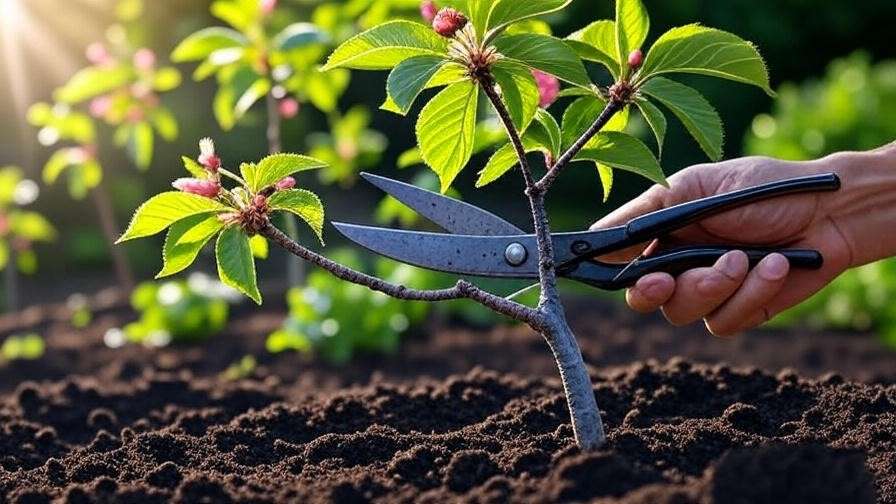
Pest and Disease Management
Nanking cherries are relatively pest- and disease-resistant, but vigilance is key. Common pests include aphids, spider mites, and Japanese beetles, which can damage leaves or fruit. Combat these with natural solutions like neem oil or by introducing beneficial insects such as ladybugs. Common diseases include powdery mildew (white coating on leaves) and leaf spot (dark spots). Prevent these by ensuring proper spacing, good airflow, and avoiding overhead watering. Pro Tip: Inspect your plants weekly during the growing season to catch issues early and keep your shrub healthy.
Maximizing Blooms and Fruit Production 🍒
Encouraging Vibrant Blooms
The Nanking cherry’s spring blossoms are a highlight, attracting pollinators and adding charm to any garden. To maximize blooms, ensure your plant receives ample sunlight and is pruned correctly. Companion planting with pollinator-friendly species like lavender, bee balm, or coneflowers can boost flower production by attracting bees and butterflies. Fun Fact: Nanking cherry blossoms are among the earliest to bloom, making them a vital food source for pollinators in early spring! 🐝
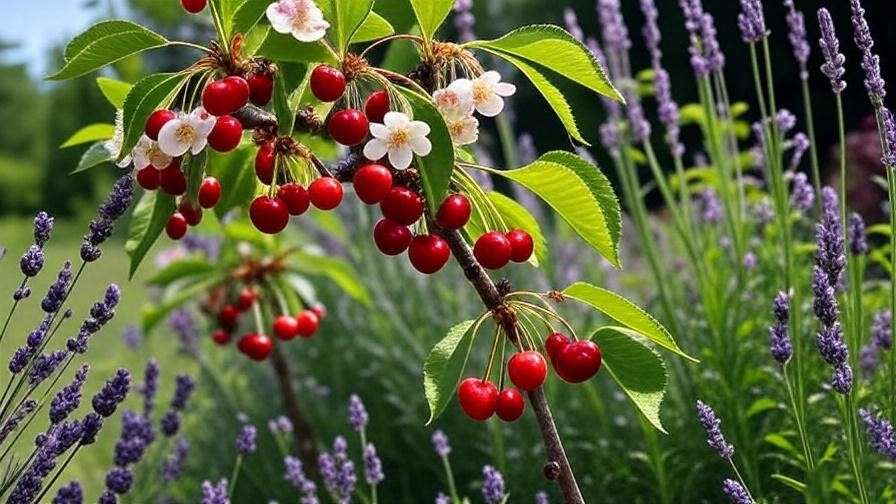
Boosting Fruit Yield
For a bountiful harvest, cross-pollination is critical. Planting two or more Nanking cherries (or a compatible pollinator like a plum or apricot) within 100 feet ensures better fruit set. During fruit development, thin out small, overcrowded cherries to improve the size and quality of the remaining fruit. Harvest cherries in mid-summer when they turn bright red and are slightly soft to the touch. Use them fresh, frozen, or in recipes like jams and pies. Tip: Wear gloves during harvest to avoid staining your hands with cherry juice.
Troubleshooting Common Nanking Cherry Plant Problems ⚠️
Why Isn’t My Nanking Cherry Blooming?
If your Nanking cherry plant isn’t producing its signature spring blossoms, several factors could be at play. Insufficient sunlight is a common culprit—ensure your shrub gets at least 6 hours of direct sun daily. Improper pruning, such as cutting too late in the season, can remove flower buds. Nutrient deficiencies, particularly low phosphorus, may also hinder blooming. To address these issues:
- Relocate if Needed: Move the plant to a sunnier spot if it’s in partial shade.
- Adjust Pruning: Prune in late winter to preserve next season’s buds.
- Test Soil: Use a soil test kit to check nutrient levels and amend with a phosphorus-rich fertilizer if needed.
Pro Tip: If your plant is young (1–2 years old), it may simply need time to mature before blooming reliably. Patience is key! 🌸
Why Is My Plant Not Producing Fruit?
Lack of fruit can be frustrating, but it’s often fixable. The most common reason is inadequate cross-pollination. Nanking cherries require a second plant or a compatible variety (like a sand cherry or plum) for effective pollination. Other causes include pest damage, environmental stress (e.g., drought), or poor pruning practices. Solutions include:
- Add a Pollinator: Plant another Nanking cherry or compatible shrub within 100 feet.
- Inspect for Pests: Check for insects like aphids that may damage flowers or young fruit.
- Ensure Consistent Care: Maintain regular watering and fertilization to reduce stress.
Dealing with Yellowing Leaves or Dropping Fruit
Yellowing leaves or premature fruit drop often signal environmental or health issues. Overwatering or poor drainage can cause root stress, leading to yellow leaves. Fungal infections like leaf spot or nutrient deficiencies (e.g., nitrogen or iron) are also common causes. For fruit drop, insufficient water, pest damage, or natural thinning (the plant shedding excess fruit) may be to blame. To resolve:
- Improve Drainage: Ensure the soil isn’t waterlogged; add organic matter to enhance drainage.
- Adjust Watering: Water deeply but less frequently to avoid soggy roots.
- Apply Fungicides: Use organic or chemical fungicides for fungal issues, following label instructions.
- Supplement Nutrients: Apply a balanced fertilizer or iron chelate for deficiencies.
Expert Insight: Regular monitoring and early intervention are critical to preventing minor issues from becoming major problems. Keep a garden journal to track symptoms and treatments. 📝
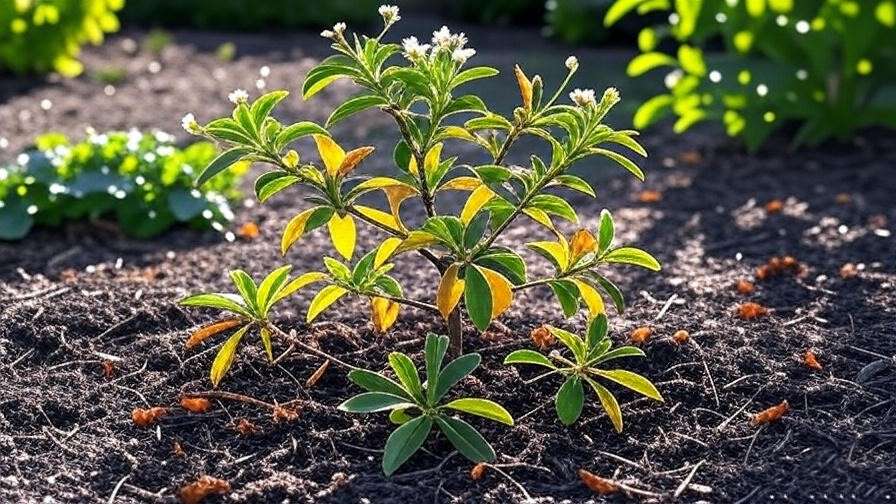
Seasonal Care Calendar for Nanking Cherry Plants 📅
To keep your Nanking cherry plant thriving year-round, follow this seasonal care guide:
- Spring:
- Plant new shrubs in early spring for optimal root growth.
- Apply a balanced fertilizer to kickstart the growing season.
- Prune before buds break to shape the plant and remove dead wood.
- Monitor for early pests like aphids and treat promptly.
- Summer:
- Water consistently, especially during dry spells or fruit development.
- Harvest cherries when they’re bright red and slightly soft (typically mid-summer).
- Thin excess fruit to improve quality and reduce branch strain.
- Check for pests and diseases weekly, as warm weather can exacerbate issues.
- Fall:
- Mulch around the base with 2–3 inches of organic material to insulate roots.
- Clean up fallen leaves and fruit to prevent pest overwintering.
- Prepare for dormancy by reducing watering as growth slows.
- Winter:
- Protect young plants in harsh climates with burlap wraps or windbreaks.
- Avoid pruning during dormancy to prevent stress.
- Check for rodent damage (e.g., rabbits chewing bark) and use tree guards if needed.
Tip: A seasonal checklist keeps care on track. Downloadable templates are available from university extension websites for detailed planning. 🌳
Creative Uses for Nanking Cherries in Your Home and Kitchen 🍰
Culinary Applications
Nanking cherries are a culinary delight, offering a tart flavor perfect for a variety of dishes. Their versatility makes them ideal for:
- Jams and Jellies: Cook cherries with sugar and pectin for a tangy spread.
- Pies and Tarts: Combine with sweeter fruits like apples for balanced desserts.
- Beverages: Infuse cherries in water, tea, or homemade cordials for a refreshing drink.
- Drying or Freezing: Preserve cherries by freezing whole or drying for snacks.
Recipe Idea: Nanking Cherry Jam
Ingredients: 4 cups Nanking cherries (pitted), 3 cups sugar, 1 tbsp lemon juice, 1 packet pectin.
Instructions:
- Crush cherries and simmer with lemon juice for 10 minutes.
- Add pectin and sugar, stirring until dissolved.
- Boil for 1–2 minutes, then pour into sterilized jars.
- Seal and process in a water bath for 10 minutes.
Enjoy on toast or as a glaze for meats! 🥄
Landscaping and Ornamental Uses
Beyond the kitchen, Nanking cherries shine in landscaping. Their compact size and vibrant blooms make them perfect for:
- Hedges or Borders: Plant in rows for a natural privacy screen.
- Focal Points: Use a single shrub as a centerpiece in a garden bed.
- Mixed Plantings: Pair with evergreens, lilacs, or ornamental grasses for contrast.
Design Tip: Combine Nanking cherries with low-growing perennials like catmint or salvia to create a layered, pollinator-friendly garden. 🌼
Expert Insights and Pro Tips from Horticulturists 🌟
According to Dr. Emily Carter, a horticulturist with over 20 years of experience at the University of Minnesota Extension, “Nanking cherries are a fantastic choice for gardeners seeking low-maintenance shrubs with high ornamental and edible value. Their adaptability to cold climates and ability to attract pollinators make them a sustainable addition to any landscape.” For advanced growers, consider grafting Nanking cherries onto dwarfing rootstocks to create compact, tree-like forms ideal for small spaces. Another pro tip: Use organic mulch like shredded bark to conserve water and enrich soil, reducing the need for synthetic fertilizers. These practices not only enhance plant health but also align with eco-friendly gardening principles.
Frequently Asked Questions (FAQs) ❓
Q: How long does it take for a Nanking cherry plant to bear fruit?
A: With proper care, Nanking cherries typically produce fruit 2–3 years after planting. Cross-pollination and consistent care can speed up this timeline.
Q: Can Nanking cherries grow in containers?
A: Yes, dwarf varieties are suitable for containers. Use a large pot (at least 18 inches wide) with excellent drainage and a high-quality potting mix. Water and fertilize more frequently than in-ground plants.
Q: Are Nanking cherries safe for pets?
A: The fruit is safe for human consumption, but leaves, stems, and pits contain cyanogenic compounds that may be toxic to pets. Keep dogs and cats away from non-fruit parts.
Q: How do I overwinter my Nanking cherry plant?
A: In colder zones (2–4), mulch heavily around the base and wrap young plants in burlap to protect against freezing winds. Avoid fertilizing or pruning in late fall to prevent new growth.
Conclusion
The Nanking cherry plant is a gardener’s dream: a low-maintenance, visually stunning shrub that delivers vibrant spring blooms, tart summer fruit, and colorful fall foliage. By following this guide’s expert tips on planting, care, and troubleshooting, you can cultivate a thriving Nanking cherry that enhances your garden and kitchen. From choosing the perfect sunny spot to harvesting juicy cherries for homemade jam, every step is an opportunity to connect with nature and create a sustainable, beautiful landscape. Start your Nanking cherry journey today and watch your garden come alive! 🌳 Share your experiences or ask questions in the comments below, and check out our related guides on “Top 10 Fruit-Bearing Shrubs for Small Gardens” or “How to Attract Pollinators to Your Garden” for more inspiration.

